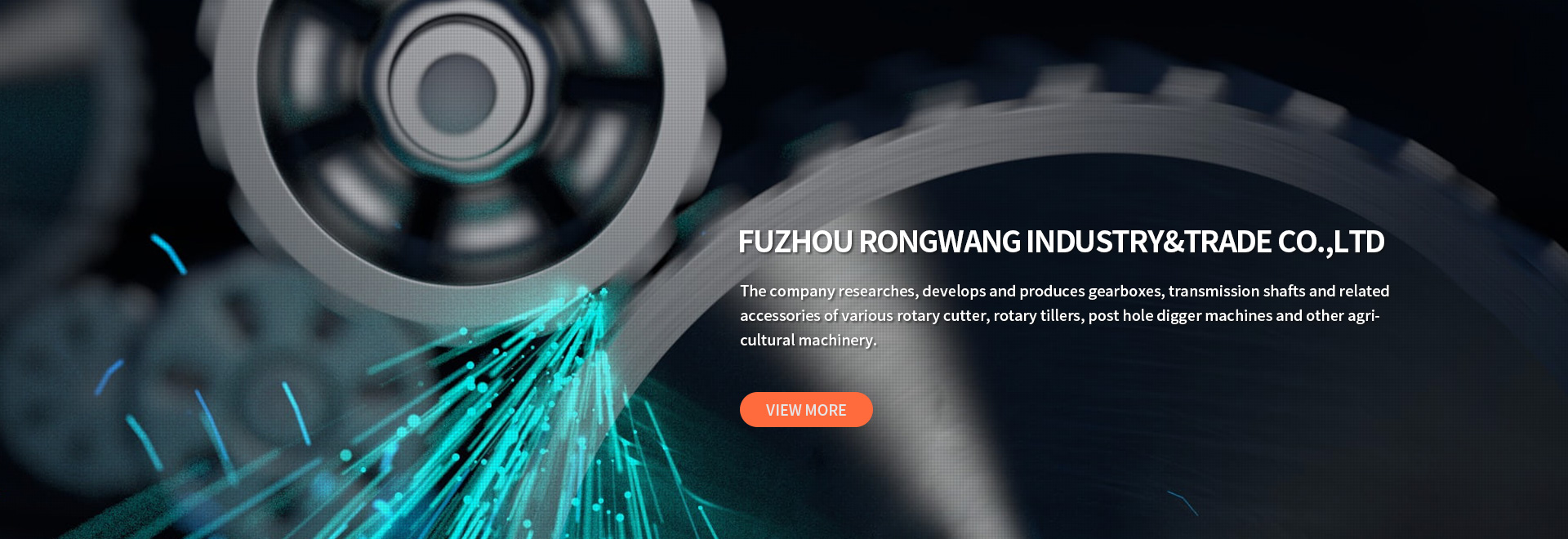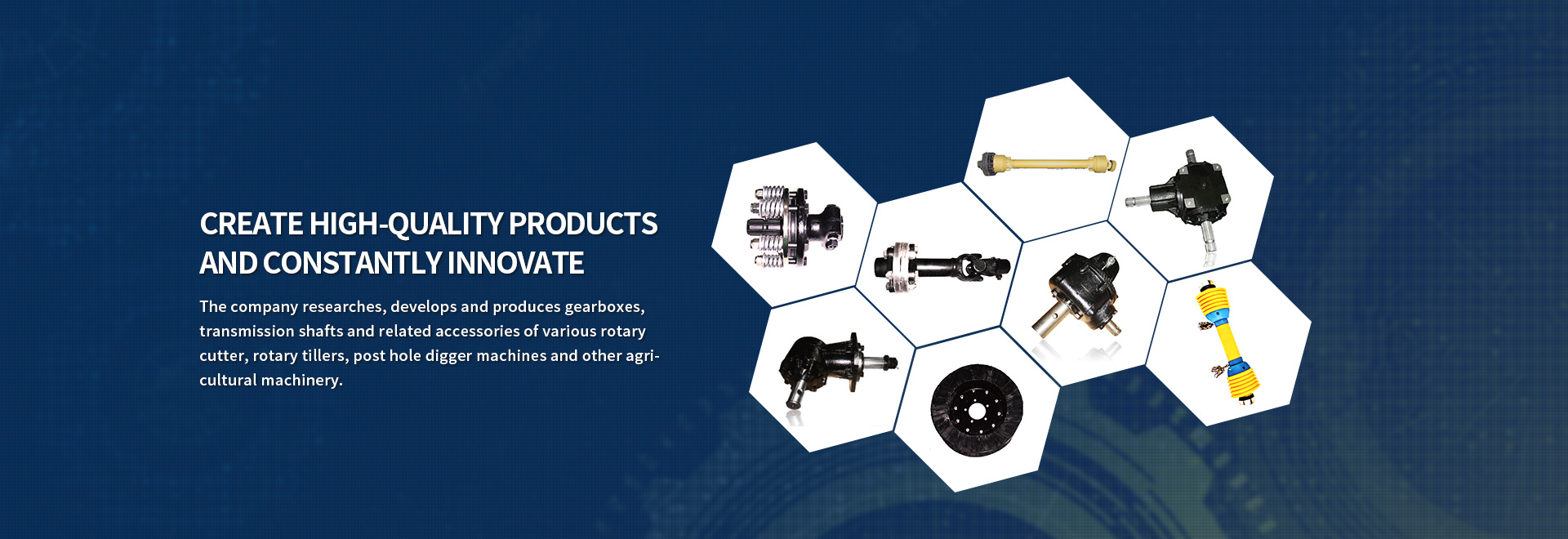Research Status of Rotary Tillers in China
Among the domestic formed rotary tillage machinery products, the horizontal rotary tiller is the mainstream, which has strong adaptability to soil and good soil mixing effect, and can meet the requirements of turning, breaking and leveling the ground in a single operation. However, the general tillage depth is relatively shallow, and the missed tillage is serious. The working parts are easy to get entangled with grass and block mud, and the power consumption is large during operation. For this reason, vertical and inclined rotary tillers were introduced. Vertical rotary tiller is mainly used for stubble cleaning. Oblique rotary tiller is a new type of tillage machine that combines the characteristics of ploughing and rotary tillage, with low power consumption and good tillage quality.
In the horizontal rotary cultivator, according to the rotation of the rotary cultivator cutter shaft and the tractor wheel, it can be divided into forward rotation and reverse rotation. If the cutter shaft of the rotary cultivator has the same steering direction as the tractor wheel, it is a forward rotary cultivator, otherwise it is a reverse rotary cultivator. The reverse rotary cultivator was put forward on the basis of the forward rotary cultivator. Later, the submersible reverse rotary cultivator and the forward reverse rotary cultivator were introduced. The reverse rotary tiller can be used as the main supporting equipment of large and medium-sized combine harvesters, which can form soil stubble, facilitate straw returning to the field, and achieve the purpose of increasing soil organic matter. The submerged reverse rotary tiller can increase deep tillage and effectively solve the problem of soil blocking in front of the cutter shaft. Through the combination of transmission mechanism and working parts, the positive and negative rotary cultivator can make the cutter shaft positive and negative, and complete stubble cleaning and rotary tillage at the same time, so as to realize multiple purposes of one machine.
The depth of the rotary tiller is generally less than 10%~20% of the radius of the rotary tiller parts. Considering the corresponding unit energy consumption required by the radius of the rotary tiller parts, the blade axis of the rotary tiller should be lower than the ground. Some designs directly install the central governor on the shaft of the rotary tillage component according to the relative relationship between the rotary tillage component and the tillage depth. This can ensure the minimum energy consumption, minimum material consumption and better working quality of farm tools. Archimedes curve is mostly used for the blade edge curve of rotary cultivator, in addition, equiangular logarithmic curve and sinusoidal exponential curve are also used. Chinese scholars have proposed a variety of edge curves, such as energy-saving edge curve design, planar and curved tangent plane design, radial spiral wire design as a transition surface, etc.
In recent years, in order to meet the current production needs, a variety of rotary cultivators with a width of 1.25~2.80m have been developed. For example, many types of rotary cultivators of 1G N series and 1G series produced by Nanchang Rotary Cultivator Factory; 1GE2 210 rotary cultivator and 1GQN 250S rotary cultivator produced by Jiangsu Lianyungang Rotary Cultivator Group Co., Ltd. The combined operation models used in China include 1GHL 280 loose rotary ridging machine, 1GSZ 210/280 combined rotary tillage multipurpose machine, 1GZJ 210 rotary tillage stubble cleaning combined land preparation machine, 1GLT 4 loose rotary stubble cleaning and ridging universal machine and 1GQH 280D stubble cleaning rotary tillage multipurpose machine. Among the domestic formed rotary tillage machinery products, the horizontal rotary tiller is the mainstream, which has strong adaptability to soil and good soil mixing effect, and can meet the requirements of turning, breaking and leveling the ground in a single operation. However, the general tillage depth is relatively shallow, and the missed tillage is serious. The working parts are easy to get entangled with grass and block mud, and the power consumption is large during operation. For this reason, vertical and inclined rotary tillers were introduced. Vertical rotary tiller is mainly used for stubble cleaning. Oblique rotary tiller is a new type of tillage machine that combines the characteristics of ploughing and rotary tillage, with low power consumption and good tillage quality.
In the horizontal rotary cultivator, according to the rotation of the rotary cultivator cutter shaft and the tractor wheel, it can be divided into forward rotation and reverse rotation. If the cutter shaft of the rotary cultivator has the same steering direction as the tractor wheel, it is a forward rotary cultivator, otherwise it is a reverse rotary cultivator. The reverse rotary cultivator was put forward on the basis of the forward rotary cultivator. Later, the submersible reverse rotary cultivator and the forward reverse rotary cultivator were introduced. The reverse rotary tiller can be used as the main supporting equipment of large and medium-sized combine harvesters, which can form soil stubble, facilitate straw returning to the field, and achieve the purpose of increasing soil organic matter. The submerged reverse rotary tiller can increase deep tillage and effectively solve the problem of soil blocking in front of the cutter shaft. Through the combination of transmission mechanism and working parts, the positive and negative rotary cultivator can make the cutter shaft positive and negative, and complete stubble cleaning and rotary tillage at the same time, so as to realize multiple purposes of one machine.
The depth of the rotary tiller is generally less than 10%~20% of the radius of the rotary tiller parts. Considering the corresponding unit energy consumption required by the radius of the rotary tiller parts, the blade axis of the rotary tiller should be lower than the ground. Some designs directly install the central governor on the shaft of the rotary tillage component according to the relative relationship between the rotary tillage component and the tillage depth. This can ensure the minimum energy consumption, minimum material consumption and better working quality of farm tools. Archimedes curve is mostly used for the blade edge curve of rotary cultivator, in addition, equiangular logarithmic curve and sinusoidal exponential curve are also used. Chinese scholars have proposed a variety of edge curves, such as energy-saving edge curve design, planar and curved tangent plane design, radial spiral wire design as a transition surface, etc.
In recent years, in order to meet the current production needs, a variety of rotary cultivators with a width of 1.25~2.80m have been developed. For example, many types of rotary cultivators of 1G N series and 1G series produced by Nanchang Rotary Cultivator Factory; 1GE2 210 rotary cultivator and 1GQN 250S rotary cultivator produced by Jiangsu Lianyungang Rotary Cultivator Group Co., Ltd. The combined operation models used in China include 1GHL 280 loose rotary ridging machine, 1GSZ 210/280 combined rotary tillage multipurpose machine, 1GZJ 210 rotary tillage stubble cleaning combined land preparation machine, 1GLT 4 loose rotary stubble cleaning and ridging universal machine and 1GQH 280D stubble cleaning rotary tillage multipurpose machine.




